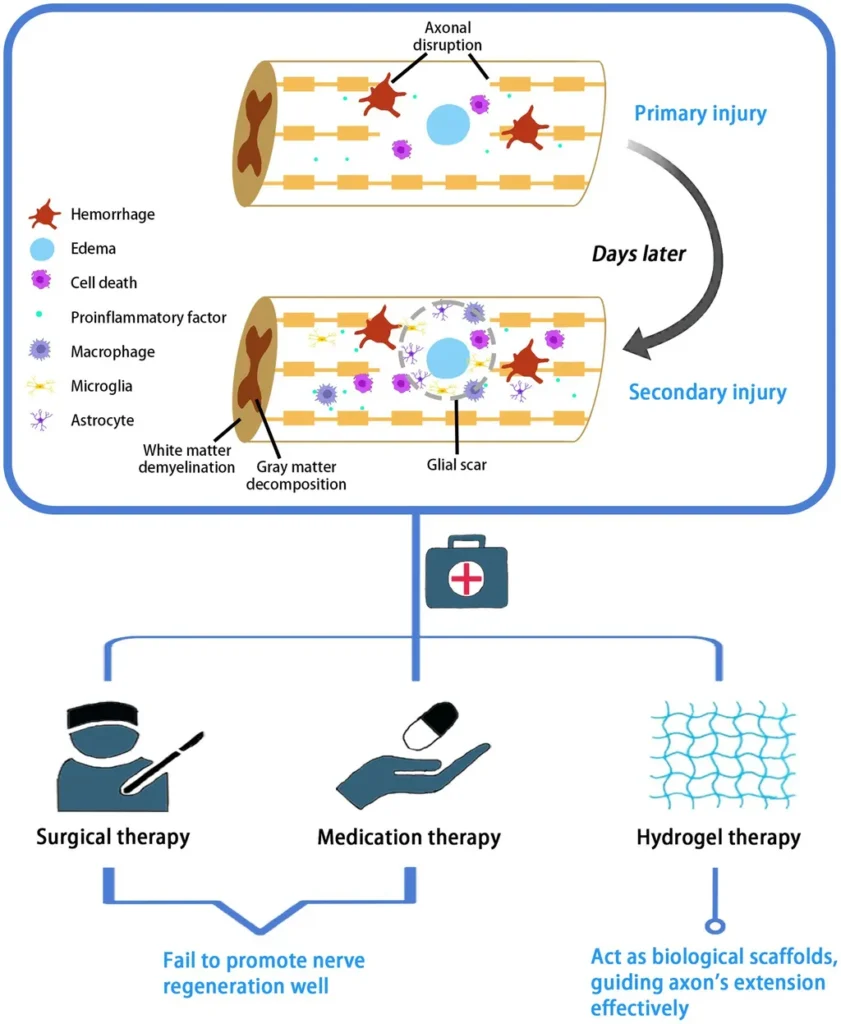In the quest to find effective treatments for spinal cord injuries (SCI), researchers have made a significant stride with a novel, localized drug delivery system. A study led by Ciara M. Walsh from the School of Medicine at University College Dublin has developed an injectable hydrogel-based system that shows promising results in improving functional recovery and modulating the immune response in a mouse model of SCI.
The key to this innovation lies in the sustained and localized delivery of interleukin-13 (IL-13), a cytokine known for its immunomodulatory properties. The challenge, however, has been the poor survival and limited localization of cell-based IL-13 delivery systems. Walsh and her team addressed this by embedding IL-13-loaded poly(lactic-co-glycolic acid) (PLGA) microparticles into a photocrosslinkable gelatin methacrylate (GelMA) matrix, creating what they term HGIL13.
“Our hydrogel-based delivery system enables a controlled release of IL-13 over six weeks,” Walsh explains. “This sustained release significantly reduced inflammation in microglia cells in vitro and, crucially, enhanced functional recovery in our mouse model of SCI.”
The results were striking. HGIL13 reduced lesion volume and demyelinated area, and modulated the neuroimmune response by decreasing resident microglia density, downregulating CD86 expression, and upregulating Arginase-1 in both microglia and infiltrating monocyte-derived macrophages. The study, published in *Bioactive Materials* (which translates to *Bioactive Materials* in English), also confirmed sustained immunomodulation over 28 days, with early reduction of activated microglia at 7 days post-injury identified as a key therapeutic mechanism.
The implications of this research extend beyond the laboratory. The hydrogel-based delivery system offers a safe, effective, and translatable strategy for localized cytokine delivery, which could revolutionize the treatment of spinal cord injuries. “This approach could potentially be applied to other neurological conditions characterized by inflammation and immune activation,” Walsh adds.
For the construction industry, this research opens doors to innovative materials and technologies that could enhance worker safety and health. The development of advanced biomaterials like GelMA hydrogels could lead to novel applications in construction, such as smart materials that respond to environmental changes or promote healing in the event of injuries.
Moreover, the study’s focus on immunomodulation and neuroprotection could inspire new safety protocols and health monitoring systems in high-risk construction environments. By integrating such advanced materials and technologies, the industry could significantly improve worker well-being and productivity.
As the construction sector continues to evolve, the intersection of biomaterials and technology will likely play a pivotal role in shaping its future. Walsh’s research not only advances our understanding of spinal cord injury treatment but also paves the way for innovative applications in construction and other industries. The journey towards effective SCI treatments is far from over, but with each breakthrough, we edge closer to a future where such injuries are no longer a life sentence.

